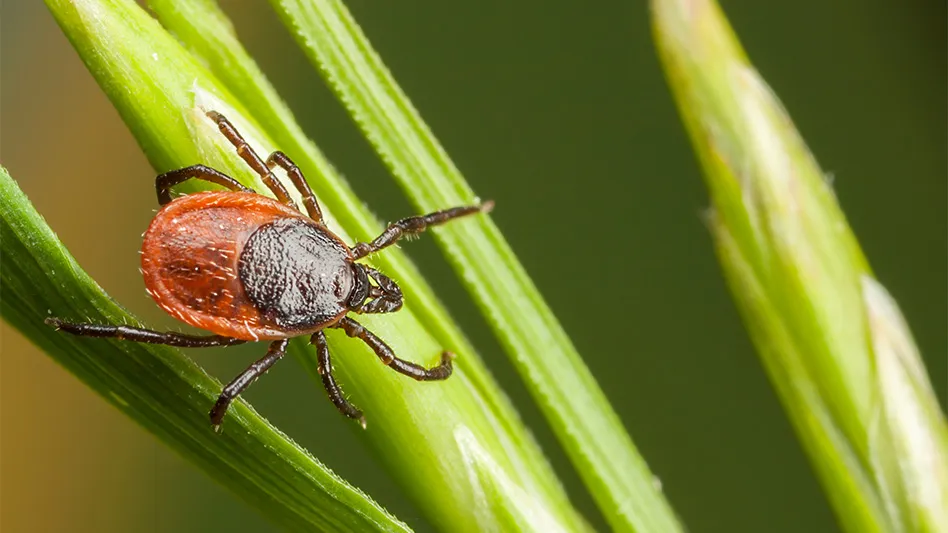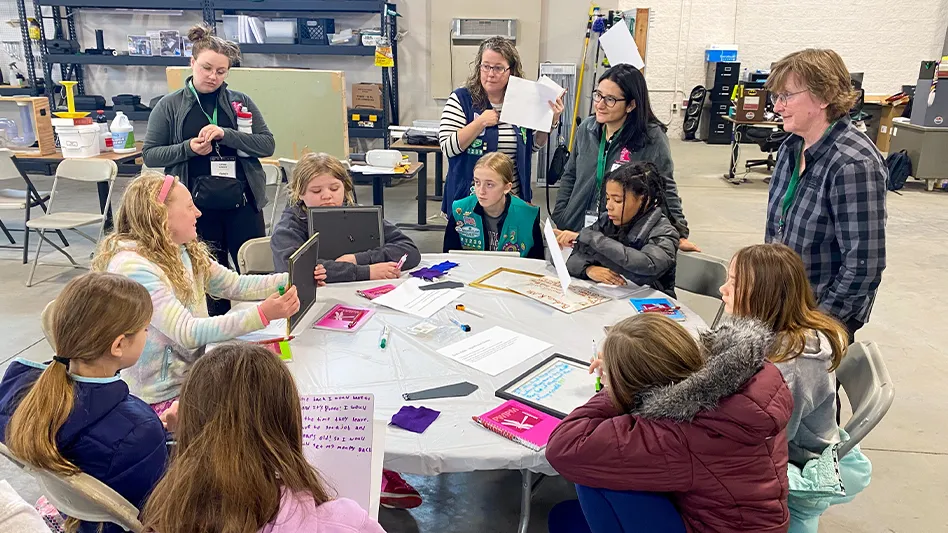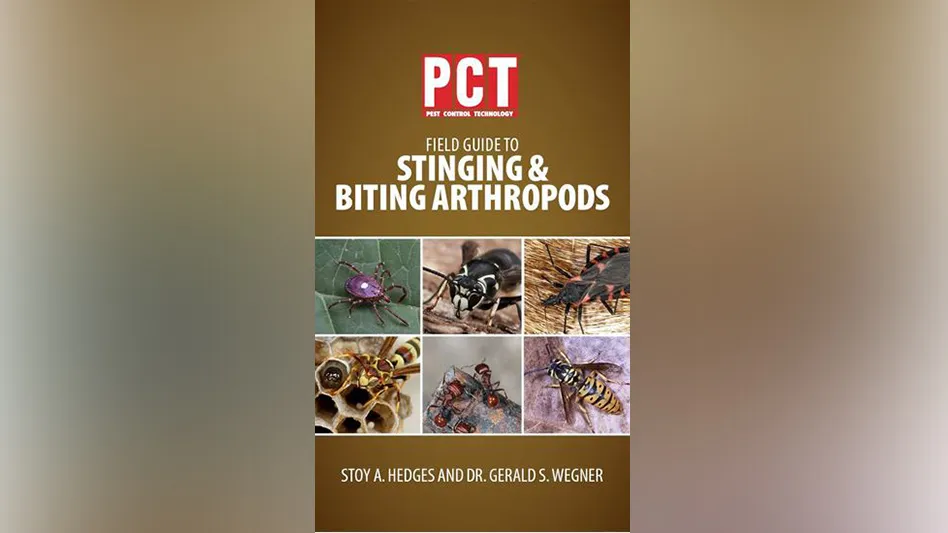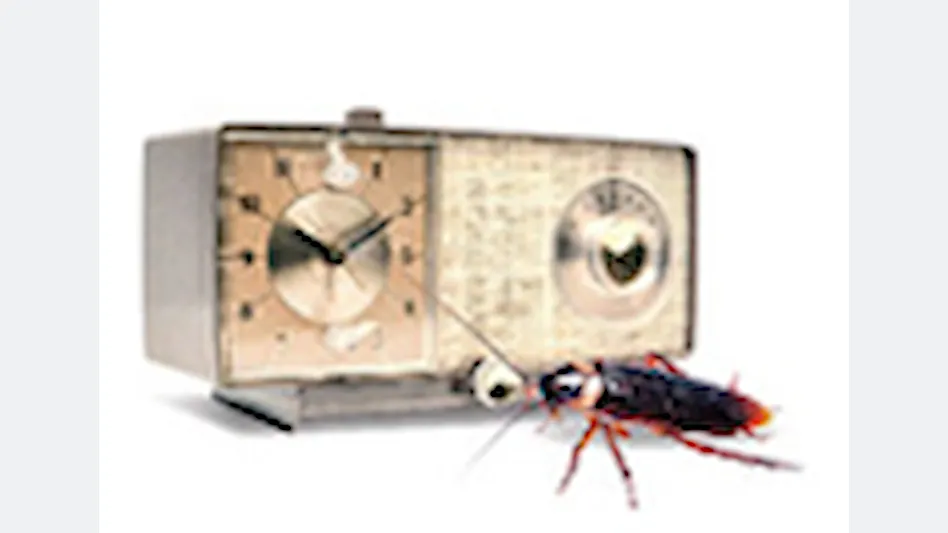
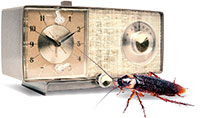 Back in the day, it seemed that we would be out killing cockroaches, essentially working third shift, only to catch a few hours sleep before coming in for a regular day at the office. |
When I was growing up, I always liked hearing my father or uncle tell me about pest control in the “good old days” of the 1940s, 50s and 60s. I loved hearing all of their stories — like the time they were killing American cockroaches in the basement of a huge knitting mill with phosphorus paste bait and how when they stomped on the dead or dying roaches a puff of smoke came out. (Please note that I don’t know for a fact how accurate this statement was. However, I definitely thought that it was a cool story. I always wished I could get my hands on some of that phosphorus bait to see if cockroaches really would smoke when stomped!)
I also can remember how my dad would talk about using insecticide dusts like pyrethrum and even DDT and how the industry “got away” from that with the advent of many of the then-new chemistries that were extremely effective on cockroaches during that time. He also talked about how he saw “first hand” the development of insecticide resistance in several insect populations. If we move forward a few decades to the late 1970s, 80s and 90s, many of us who may now be considered “industry veterans,” also can talk about our “good old days.”
There have been times where we had new materials become available that significantly aided us in providing cockroach control for our clients. There also have been times where we have seen materials that we have considered to be extremely effective “control tools” become unavailable. In this article we are going to look back to the past to see what information we can use now (and in the future) to effectively address cockroach control concerns for our clients.
Equipment.
While there definitely have been innovations in pesticide application equipment in the structural pest management industry, many of the most common basic treatment tools have remained similar to what we have had for many years. This may be due to the fact that we are simply attempting to deliver some form of insecticide into a potential cockroach harborage area where those insects will encounter that insecticide for contact or consumption.
There are, however, non-chemical innovations that have been developed that positively impact cockroach control programs, such as improved sealants, monitoring devices and highly portable hepatic filtered vacuums.
The “BCGB Era.”
One thing I don’t miss about “the good old days” of cockroach control is what I like to refer to as the “BCGB” (“before modern cockroach gel baits”) era. In many restaurants, hotels and food-service kitchens, it was commonplace to regularly go in after closing to provide corrective and/or preventive “intensive cleanouts” in order to maintain cockroach control. Back “in the day” it seemed that at least several nights a week we would be out somewhere killing cockroaches, essentially working third shift, only to catch a couple hours of sleep before coming in for a regular day at the office.
With the introduction of effective cockroach gel baits, this has radically changed the way we do business with our commercial food-service accounts today.
If you take a moment to think back, it hasn’t been many years since resistance to some common cockroach gel bait products was becoming a major area of concern. I seem to remember attending a seminar a number of years ago where the speaker emphasized that if he had to bet on chemistry or the cockroach, in the long run, he would always bet on the cockroach.
Many of the suppliers producing effective cockroach bait products today can talk extensively on how they are constantly looking for “the best” bait attractants and ingredients to deliver their insecticides in order to maximize effectiveness and efficiency. I feel that there has been so much continuing effort by many of the cockroach bait formulators in addressing this particular issue that customers, applicators and “end users” are currently seeing excellent control results using many of these products.
Though we are not seeing bait aversion and feeding resistance, that doesn’t mean that the potential for recurrence isn’t extremely high. We should keep in mind that this feeding resistance issue has the potential to reappear at some time in the future and practicing product rotation should aid in delaying the development of resistance in cockroaches. We also should incorporate other treatment materials in our cockroach control programming. There are currently multiple products in both aerosol and dust formulations that are effective cockroach control tools. In addition, there are several newer liquid insecticides that also offer excellent cockroach control alternatives.
The Cockroach Factor.
Biologically, cockroaches are extremely resilient and able to survive, live and even thrive where many other animals cannot. The smelling, tasting and feeding process of the cockroach can be described as a defensive filtering process to sort out anything that may be harmful to the cockroach. In the case of the German cockroach, you also can add in their tremendous reproduction potential and you have an excellent combination of traits favoring their survival and potential for developing resistance to the insecticides that we may use to control them.
The Human Factor.
Over the years I have known a number of excellent pest control service technicians...and some who weren’t so excellent. Years ago one of our commercial pest technicians lost a large commercial account and was having difficulty maintaining cockroach control in several others. After discussing with him the seriousness of this situation we scheduled a series of intensive services at the other food-service accounts. Once on site we crawled, climbed, removed access covers and killed a bunch of roaches! What perplexed me at the time was that this technician knew exactly what to do and actually did a good part of the “roach killin.’”
What I learned from this experience was that when this technician was on his own and not directly supervised, he was a victim of “waist-to-eye syndrome.” Simply put, if any spot was above eye level or below his waist level it didn’t get inspected, and definitely not consistently treated. Even with the availability of improved application equipment and pesticide materials we have been — and still are — dependent on the service technician as the front line pest management professional to inspect, monitor, evaluate and take action to control or prevent cockroaches for our clients based upon his or her findings.
When performing inspections for existing or prospective clients with cockroach issues, it is commonplace to find evidence of, or accumulations of, cockroach bait materials. Many of the visible residues are of products that are effective in controlling cockroaches but are simply not being placed in the areas where foraging cockroaches are present. I almost get the feeling that some technicians figure that the products being used are so good that the cockroaches will cross oceans and scale skyscrapers in order to locate and feed upon their cockroach bait offerings. I think most of us know that in order to kill roaches, as in the good old days, we have to get materials delivered directly into cockroach harborage areas.
The Customer Factor.
I once started a pest service at a cockroach-infested apartment community to find the picked-over remains of a cooked chicken in an oven in one of the units. Upon return for a follow up two weeks later, the chicken carcass was still in the oven.
When there is no client cooperation, our ability to perform pest control miracles is limited. I truly believe that many of the pest management issues that we face relating to our clients are the same as those faced by our industry in previous generations. Customer issues involving sanitation, moisture, clutter and access are often common concerns. We often are dealing with clients who have little or no knowledge of pest management strategies (and may have little to no interest in learning them).
Unfortunately, in today’s fast-paced society, instant gratification can be the norm, competition intense and tempers thin. All of these factors contribute to challenges in establishing and maintaining positive customer/client relations.
Getting Back to the Basics.
At one time or another we have all been asked what caused a particular cockroach control problem or failure. The second question is always, “What can we do about it?” Even with some of the excellent cockroach control tools we have available there are still no “silver bullets” that will guarantee cockroach control with our clients. In areas that have conditions such as high moisture, high heat and aerosolized grease, the likelihood of any pesticide formulation remaining effective is unlikely. If there are cockroach exclusion needs then properly sealing a crack or pipe/wall junction following treatment can limit potential cockroach harborage. Additionally, sealing after treatment often eliminates the need to continue retreating that same area repeatedly in the future.
Many of the classic IPM techniques used in the past seem to get “glazed over” when we have excellent control materials available. We should keep in mind that if there is a failure to properly address issues — such as sanitation and seeking out cockroach source areas — then unsatisfactory control effectiveness will likely occur.
Some Closing Thoughts.
In some form or another, we are all creatures of habit. In the case of pest management service technicians, these habits may be good or bad. For decades we have trained technicians on the importance of making thorough inspections for cockroaches and even consistently recommended using a good, reliable flashlight. We also have always stressed the importance of the inspection process and how the process should dictate the treatment strategies that we should implement.
By taking a look back at “where we’ve been” in the structural pest management industry, we often can gain insight as to where we may be headed. In the case of cockroach control, we should be consistent practitioners of Integrated Pest Management as well as continually educating ourselves and our clients. Many of the points we discussed on cockroach control may be old fashioned, or from “the good old days,” but by continuing to follow many of these principles, our long-term success in cockroach control and prevention programming will be greatly increased.
The author is president of McNeely Pest Control, Winston-Salem, N.C. A member of the Copesan Services Technical Committee, McNeely has served on the board of the North Carolina Pest Management Association, is a member of the Entomological Society of America and is a North Carolina Wildlife Damage Control Agent. Email him at smcneely@giemedia.com.
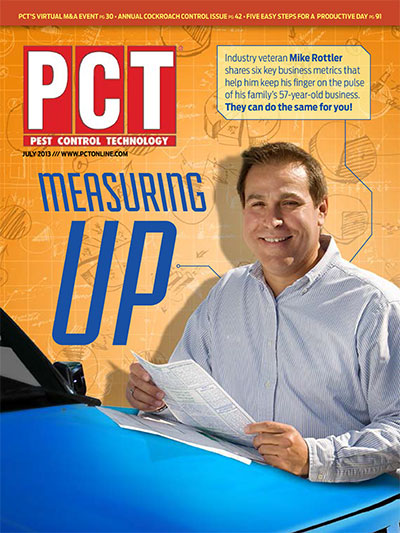
Explore the July 2013 Issue
Check out more from this issue and find you next story to read.
Latest from Pest Control Technology
- Viking Pest Control Organizes a Charity Bike Build for Local Families
- Gaining Control of Structure-Infesting Carpenter Ants
- Big Blue Bug’s Brian Goldman Receives Rhode Island Small Business Person of the Year Award
- UF Researchers Examine How Much Bait it Takes to Eliminate a Subterranean Termite Colony
- Women in Pest Control Group Continues to Grow, Provide Opportunities in the Industry
- NPMA Announces Results of 2024-2025 Board of Directors Election
- Massey Services Acquires Orange Environmental Services
- Hawx Pest Control Wins Bronze Stevie Award for Sustainability
